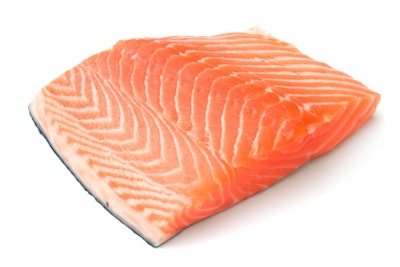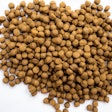
When fish eat plant oil containing marine omega-3, they get more omega-3 in their flesh, better pigmentation and fewer dark spots.
The world cannot make enough ingredients containing marine omega-3 fatty acids; demand is greater than supply.
Bente Ruyter, senior scientist at Nofima, has conducted research for many years to find out how farmed salmon can get a higher content of omega-3 in the body. One option is oil from modified canola.
Canola oil
“The Norwegian Food Safety Authority has approved a genetically modified canola oil that can be used in salmon feed,” Ruyter said. “The plant produces marine omega-3 fatty acids. Many years of research together with the industry has brought us to this point.”
Canola is a variant of common rapeseed. The canola that provides the oil researched by Nofima has been genetically modified and developed by the Australian research organization CSIRO in collaboration with the company Nuseed. As a result, it contains more of the omega-3 fatty acids that salmon need to stay healthy, and that humans benefit from.
The oil is extracted from the canola seeds and does not carry any of the plant’s genetic material that has been modified.
“Research has been carried out over many years to see if this oil can be used in fish feed,” Ruyter said.
The scientists have found that it is suitable and the Norwegian Food Safety Authority has also approved it.
EPA and DHA
In nature, marine microalgae produce omega-3 fatty acids called EPA and DHA. Crustaceans then eat these microalgae, and the fish eat the crustaceans. Therefore, EPA and DHA end up in the fish.
It has been difficult to get a high enough level of these fatty acids in farmed salmon. Therefore, microalgae genes have been inserted into canola so that it can also make the same fatty acids. When the oil is used in fish feed, the scientists have found that the fish perform better, get more omega-3, fewer dark spots and better red color in the fillet.
Not enough wild fish
“Global production of fish oil is stable: catching more wild fish is not sustainable. Therefore, fish oil is becoming less and less available for the aquaculture industry every year as the industry grows,” Ruyter said.
In 2000, 30% of salmon feed consisted of fish oil. In 2020, this was down to 10%.
“Our research shows that it is not healthy for salmon to have such low levels of omega-3 in the feed. They become less robust and their flesh has poorer color. The industry has therefore started to increase the level of omega-3 fatty acids in the feed again,” she said.
Need new sources of omega-3
“The production of genetically modified canola has great potential for growth, and will probably become an important new source of omega-3 in the fish feed,” says Ruyter.
It makes the fish healthier than if they were only fed standard plant oil. Salmon also need a certain level of omega-3 in their feed in order for their muscles to get the delicate pink color. Nofima’s research also shows that the omega-3-rich canola oil reduced the prevalence and severity of dark melanin spots in salmon fillets.
Nofima has previously shown that the fatty acid DHA has this effect.
In order to document the properties of the oil in salmon, scientists have had to carry out trials in fresh water, in closed tanks and in net-pens at sea. All the while, they have had to ensure that nothing is discharged into the surrounding nature. As a result, they carried out trials in all phases of the fish’s life.
“It is now approved for use. Whether the industry uses it is another matter. But I think it will force its way in,” Ruyter said.
The research has been financed by the Norwegian Seafood Research Fund and in collaboration with Institute of Marine Research, Nuseed and Mowi.









